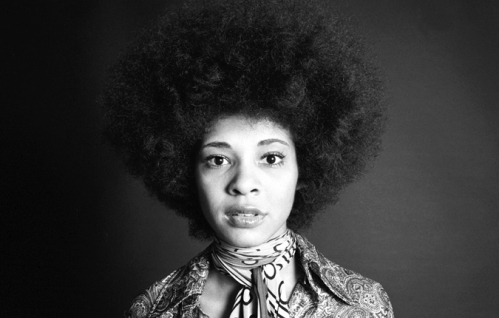
Betty Davis is, as her ex-husband Miles would undoubtedly have put it, a bad bitch. Her trio of mid-1970s albums–including 1974’s They Say I’m Different, which Andre posted about last summer–constitute some of the rawest, nastiest funk-rock ever released. Imagine prime Tina Turner, but with a heavier rock influence; and what she lacks in vocal prowess, she makes up for with a persona so aggressive, you’d swear she was the one beating up on Ike. If you’re even the slightest fan of powerful women and/or heavy funk, then you need to hear Betty Davis.
That being said, my recommendation for the latest release of Betty Davis’ music, The Columbia Years, 1968-69, is a little more conditional. I received the compilation’s (gorgeous!) vinyl release for Christmas last month, and I love it; it sits proudly on my shelf even as we speak. But I can also understand why it wasn’t officially released until last year.
Comprised of two sessions recorded for Columbia Records in 1968 and 1969–the first produced by trumpeter Hugh Masekela, the second by Betty’s then-husband Miles Davis–The Columbia Years is, if nothing else, a fascinating historical document. For fans of the more famous Davis, it’s effectively ground zero for jazz fusion: the moment Miles hooked up with the circle of acid rockers and funkateers in Betty’s orbit, including Jimi Hendrix sidemen Billy Cox and Mitch Mitchell. Without Betty, there would be no Bitches Brew (in more ways than one–that album’s title is said to have referred to Betty and her entourage of countercultural socialities). According to the compilation’s liner notes, Betty’s come-hither purr in her cover of Cream’s “Politician” even ended up inspiring Miles’ song “Back Seat Betty,” a full 12 years after the couple split.
But just as Betty was never “Mrs. Miles Davis,” The Columbia Years is also of interest for reasons beyond its significance in Miles’ body of work. You can hear the seeds of Betty’s own unique stylistic hybrid being planted, as she tries her hand at a version of Creedence Clearwater Revival’s “Born on the Bayou” heavily indebted to “Stone Free” by the Jimi Hendrix Experience; or even her own composition “Hangin’ Out,” which comes across as a tamer version of later party-girl anthems like “If I’m in Luck I Might Get Picked Up.” For existing devotees, the opportunity to hear her earth-shaking style in embryonic form is priceless.
For newcomers, though, I’m afraid the appeal will be significantly lessened. The fact is, in 1969 Betty Davis didn’t really sound like Betty Davis yet; her vocals are thin, and she hadn’t yet developed the hellion’s rasp that made her voice on later records so distinctive. And, while the personnel on the sessions is impressive–not only Cox and Mitchell, but also John McLaughlin, Herbie Hancock, Wayne Shorter, and others–the arrangements lack grit and verve; they have the slightly patronizing feel that comes with the territory of crack jazz musicians slumming in “lesser” genres. It’s telling that Davis’ best music would be recorded with players who were funk and rock musicians first: her 1973 debut, for example, featured Santana‘s Neal Schon, Larry Graham, and other members of Graham Central Station and the Family Stone. It’s also telling that her music got better the more she was at the helm: her second and third albums, in 1974 and 1975 respectively, were both self-produced.
So, yes, everyone should listen to Betty Davis; and, since to know Betty Davis is to love her, then sure, eventually everyone should probably listen to The Columbia Years. But if you’re just getting started, don’t start at the beginning. Check out Betty Davis, They Say I’m Different, or Nasty Gal; hell, check out her canned 1976 album Crashin’ from Passion, later reissued as Is It Love or Desire? Then, circle back to The Columbia Years and see how it all began. With records like this being released and a new documentary set to premiere this summer, the time has arguably never been riper to rediscover Betty Davis. I can attest that she’s a discovery well worth making.
















